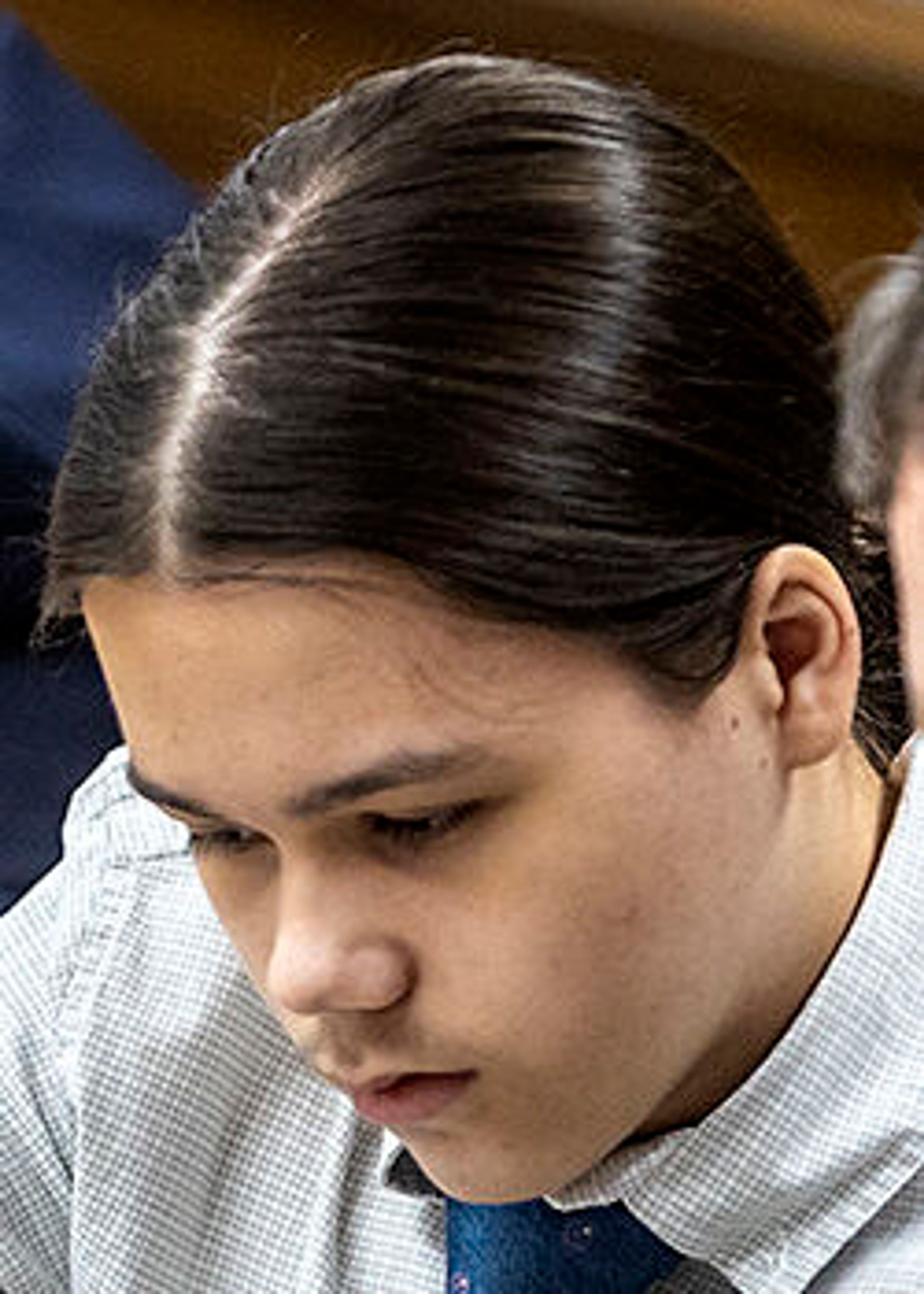Fingerprint analysis points to younger Ewing
17-year-old defendant appears to be linked to crime; defense questions the credentials of expert witness
Two forensic experts connected more evidence to Demetri and Clyde Ewing, however, the defense provided heavy scrutiny of one expert.
Tara Martinez, of the Idaho State Police Forensic Science lab, testified Tuesday in the seventh day of the first-degree murder trial of Demetri Ewing. The 17-year-old, along with his father, Clyde Ewing, is charged in the shooting death of Samuel Johns on Jan. 8, 2021.
Before the jury was brought in at 9 a.m. Tuesday, Chief Deputy Prosecutor April Smith anticipated the defense’s objection to Martinez’s testimony and asked questions as an offer of proof for her qualifications. Martinez spoke about her education and training for processing and comparison in latent prints at the forensic lab, where she has worked for the past six years.
Defense attorney Lawrence Moran questioned her credentials because she has yet to be certified as a latent print analyzer and objected to her qualifications as an expert. Martinez was testifying on latent prints found on a Walmart bag at the crime scene.
Smith argued that Martinez’s qualifications make her able to render an opinion to the jury. Second District Judge Jay Gaskill said her experience and training allowed her to aid the jury in understanding latent prints and approved her testimony.
The jury then returned and Martinez shared her findings using a slideshow presentation. Martinez compared the unknown fingerprint found on the Walmart bag and the known fingerprint provided to the lab by Demetri Ewing. She was handed the bag as evidence and confirmed it was the bag she tested in the lab.
In her presentation, she showed 11 points of comparison between the fingerprint on the bag and the one provided by Ewing. She clarified that there were other points of comparison not indicated on the slide because it was shown to the jury as a demonstration.
In her conclusion, she testified that the fingerprint on the bag came from the left index finger of Ewing. The prints were then analyzed by another scientist as part of the lab’s standard protocol and her findings were verified. Martinez also said no two people can have the same fingerprints and that although family members can have the same patterns, the ridge lines, creases and minutiae of the prints will be different.
The defense continued in its breakdown of Martinez’s analysis during cross-examination as it did before her testimony. Moran questioned Martinez’s report, which initially indicated Ewing’s print didn’t match the print found on the bag and that there was inconclusive analysis on whether it was a palm print or a fingerprint. After the verifier looked at the fingerprints it was then analyzed again by Martinez, who concluded it corresponded with the fingerprint provided by Ewing.
Martinez explained the conflicting reports, under the direction of Smith, later in her testimony. Martinez said that because the fingerprint was left on a clear plastic bag, the verifier at the lab suggested flipping the fingerprint in analysis. Martinez did, realizing the fingerprint was on the inside of the bag, not the outside of the bag. After the fingerprint was flipped, that’s when Martinez concluded it came from Ewing’s left index finger, which was verified.
Moran also presented Martinez with copies of the fingerprints provided by the prosecution to the defense and mentioned a discrepancy in the number of ridge lines between two dots indicated on the analysis of the fingerprint on the bag and the one provided by Ewing. Martinez explained that the discrepancy only means that there is distortion in the fingerprint, which is common in latent fingerprints, which are fingerprints unintentionally left behind at the crime scene.
“No print you ever leave accidentally is going to be exactly as your fingers are,” she said. “You’re not going to throw it out because it’s not perfect. It’s never going to be perfect.”
Those copies of the fingerprints were submitted by the defense as evidence.
Martinez also said the fingerprint on the bag was only compared to the Ewings at the direction of the Lewiston Police Department.
The prosecution also called John Stewart, supervisor in the forensic DNA case unit at the FBI lab in Quantico, Va., who specializes in mitochondrial DNA. Stewart explained that mitochondrial DNA is passed from mother to children and provided a slideshow to the jury to help explain his analysis.
For this case, he analyzed the DNA sequence in a hair found at the crime scene. Demetri and Clyde Ewing both provided DNA samples. The mitochondrial DNA at the crime scene had the same sequencing as Clyde Ewing. The DNA is also placed in a database to see how common it is compared to 10,000 other random samples from other people, including Caucasians, Hispanics, Asians, African Americans and Native Americans, there was a less than 1% comparison to the database.
Defense attorney Greg Rauch noted that the DNA excluded Demetri Ewing from a contributor to the DNA, which Stewart confirmed. Rauch also questioned if siblings who share the same mother as Clyde Ewing would have the same mitochondrial DNA profile and Stewart agreed they would.
With those two witnesses, the prosecution finished presenting its case at about 11:15 a.m. Tuesday, the shortest day of the trial so far. The jury was excused until 9 a.m. today because of the availability of witnesses. The defense will begin presenting its case today with forensic witnesses.
Gaskill told the jury he expects testimony to finish today and to hand the matter over to the jurors Thursday.
Brewster may be contacted at kbrewster@lmtribune.com or at (208) 848-2297.









